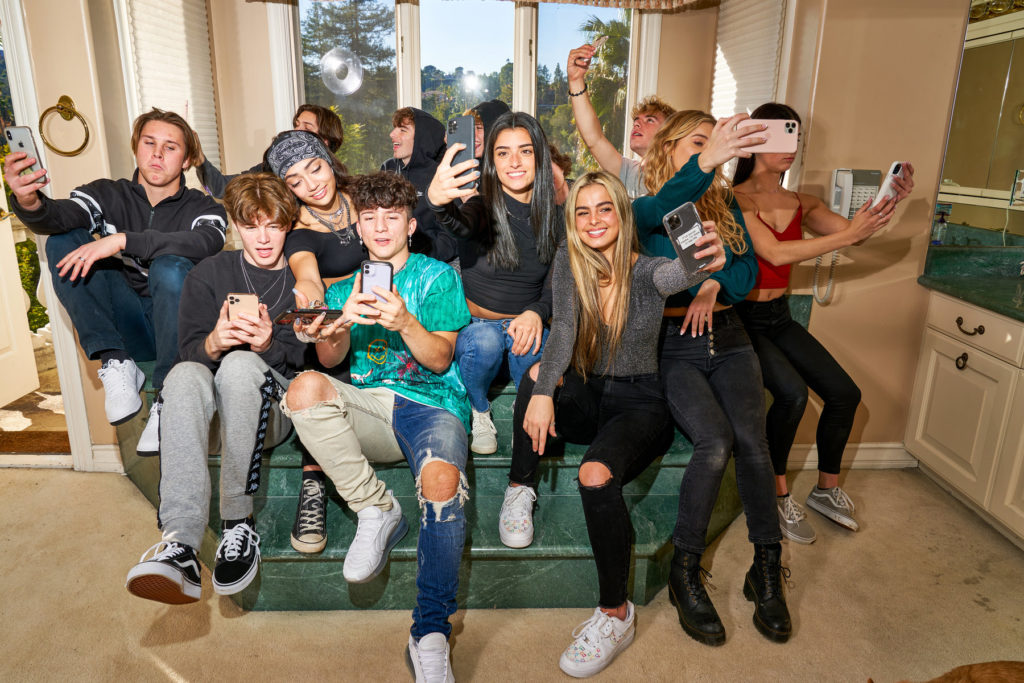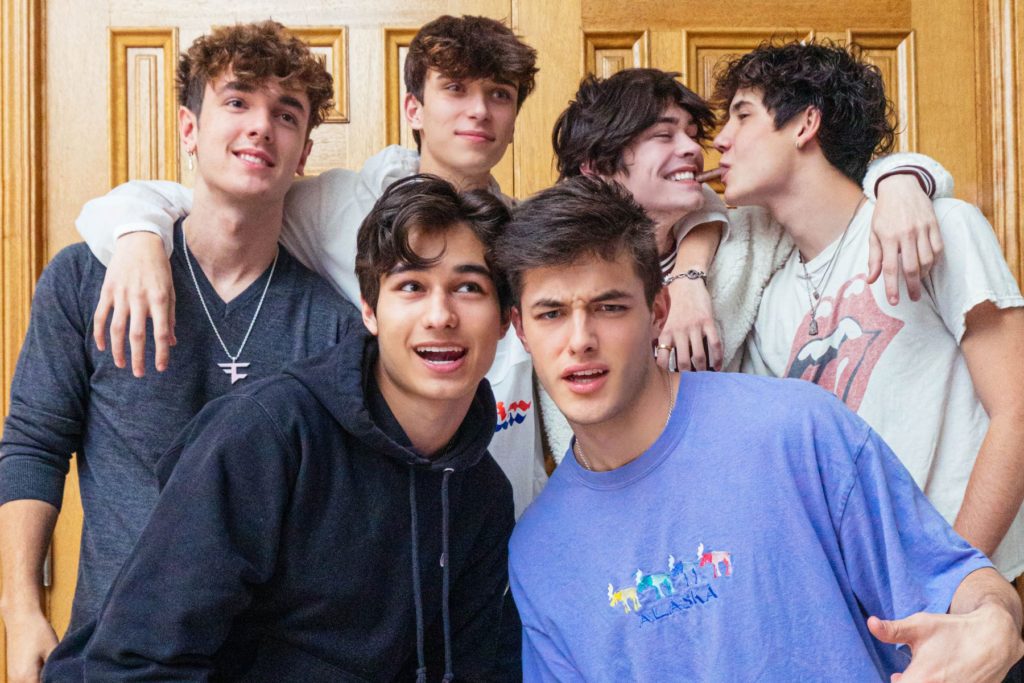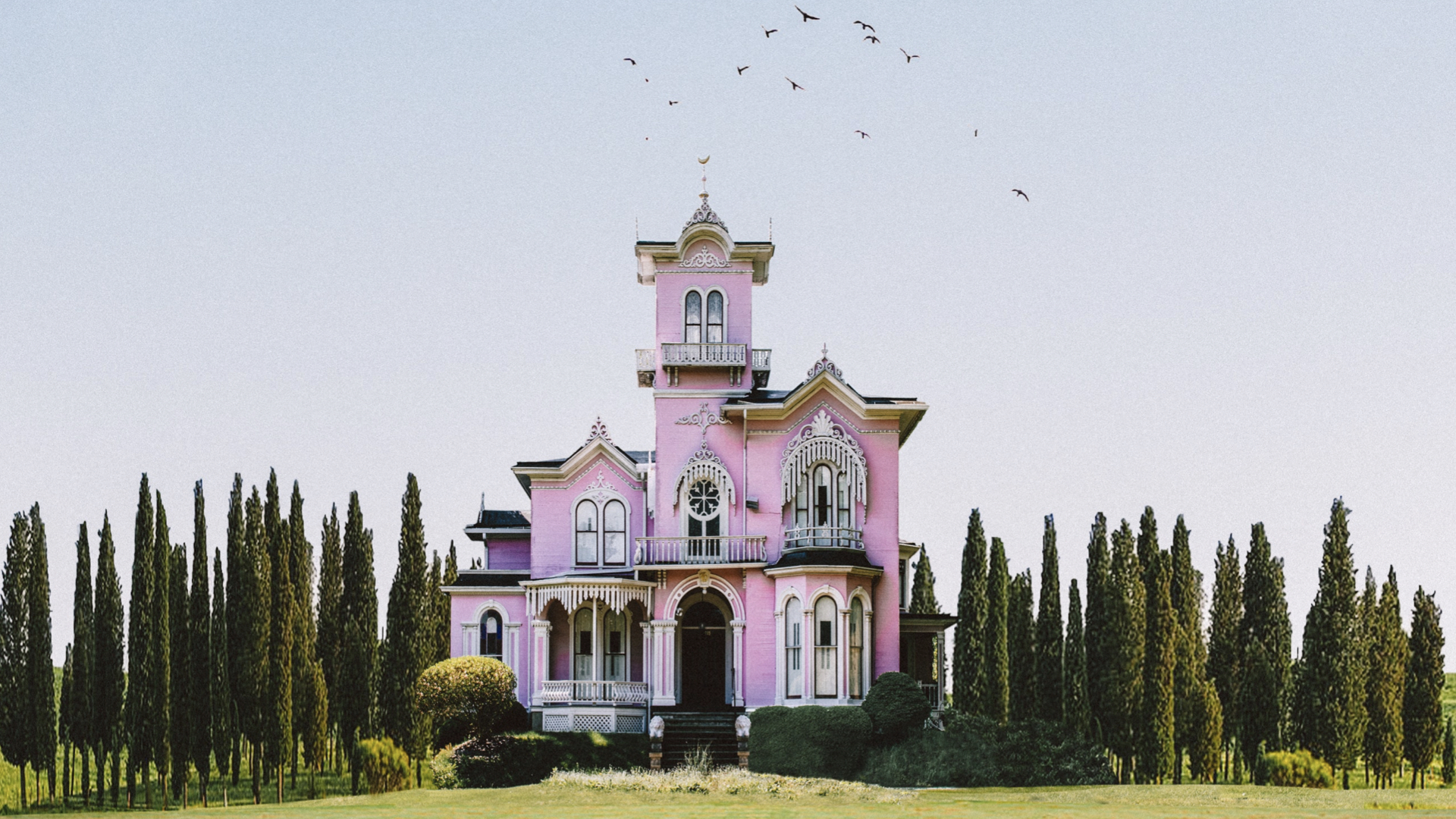There’s a certain threshold that a cultural phenomenon crosses once it becomes portrayed on a Ryan Murphy sitcom. Just as influencer houses did when one became a plot point in a recent episode of American Horror Stories.
Sometimes known as a creator house or a collab house, influencer houses often refers to the mansion out of which content creators both live and work. They also offer a like-minded community of people who work in the same always-on digital space that can provide emotional support to deal with trolls, overbearing managers or brand deals gone awry. Some houses require their stars to pay their rent via revenue from their brand deals while others include posting stipulations (as in, you must post on the house’s feed at least once a day, if not more).
In theory, they sound like a modern-day art commune. But in reality, influencer houses operate more like the mansions where Love Island or Too Hot to Handle are filmed—replete with over-the-top drama, seemingly endless drinking and the uncanny ability to make even the most mundane misunderstanding seem worthy of a headline. The members of the YouTube collab channel Our Second Life started 02L Mansion in 2014, which has been hailed as the first influencer living space of its kind.

Not long after, 1600 Vine—which is indeed an entire apartment building—became the well-known hub for Vine stars. And then came David Dobrik’s Vlog Squad house and Jake Paul’s Team 10 abode.
As a 2020 Taylor Lorenz New York Times piece on influencer houses notes, “[E]verything about TikTok happens faster than it does anywhere else.” That particular article honed in on the palatial Hype House, which has remained among the most popular in Los Angeles. The biggest stars of TikTok, including Charli and Dixie D’Amelio, plus Addison Rae, have been members but the Hype House was founded and run by Thomas Petrou. The endless selfies, creation of viral dances and video pranks were all fun and games, until Daisy Keech, an early member of the house, filed for a trademark of “The Hype House.” Petrou reacted by filing for a trademark of his own, posting about forthcoming merch for the house…and hitting Keech with a cease-and-desist. Then came each party’s requisite YouTube vlogs explaining their side of the story, the 2021 version of a public statement.
What’s the latest with Hype House? Well, Petrou and Keech have settled their lawsuit and signed an NDA on the matter, thus sealing the actual details of the drama from the public. Regardless, it seems both parties have deleted their tell-all vlogs in the legal process. But Petrou and his Hype House have carried on with its 19.9 million TikTok followers while Keech went on to start a new creator house, Clubhouse…only to also publicly depart that one a few months later. Keech explained: “In order to really focus on myself and my brand, I needed my own space to work out of.” Perhaps living in the fishbowl-like existence of a creator house isn’t quite as beneficial as it seems.

And Keech has a point. Quite a few influencers are citing burnout among one of the major downsides to their fame. In order to stay relevant—by garnering the clicks, likes or views that fund their lifestyles—they have to constantly be creating content. And that can be exhausting. “The influencers are burned out, too,” says Vox. “Young Creators Are Burning Out and Breaking Down,” warns the New York Times. And in 2019, BBC shared what felt like a forewarning: “[F]atigue hitting influencers as Instagram evolves.” Creators who inhabit their own space and are able to surround themselves with people who don’t create. But not all influencer houses are like the Hype House and perhaps a move towards catering to the actual needs of creators—and not creating an artificial lifestyle for them—is where the future of these spaces lie. Take, for example, Note House.
No one actually lives in the airy East Nashville home with a shiplap fireplace; it serves more as a coworking space where influencer members can make use of the natural lighting and neutral decor to shoot TikTok videos or snap a branded Instagram post. It was created by influencer marketing agency Of Note and has over 50 influencers as members, along with a waitlist for those who dream of joining.
Unlike the creator houses of LA, that bother their neighbors with late night parties and curious fans snooping about, these new versions that focus on the actual needs of members look to be a better use of everyone’s resources. That way creators can focus on building their businesses and hopefully find the sort of a work/life balance they need. With minimal drama.
Let’s Talk